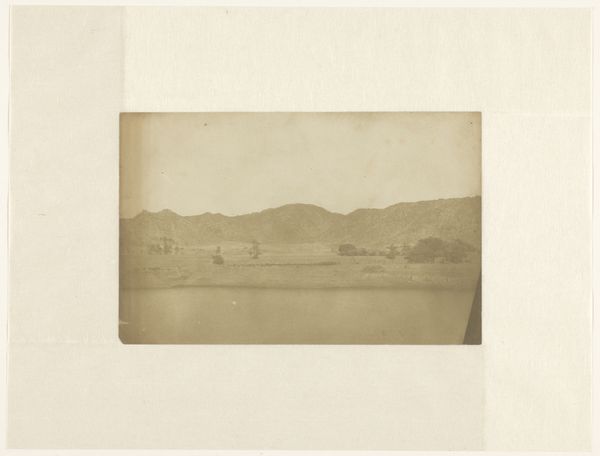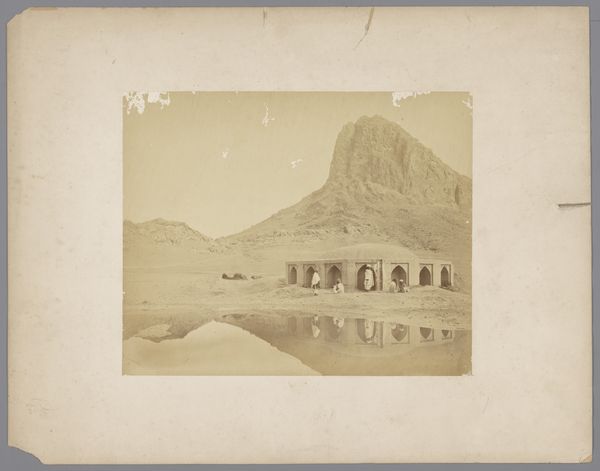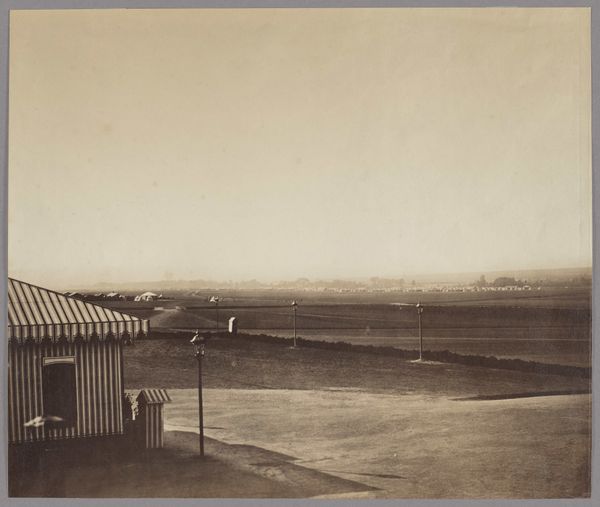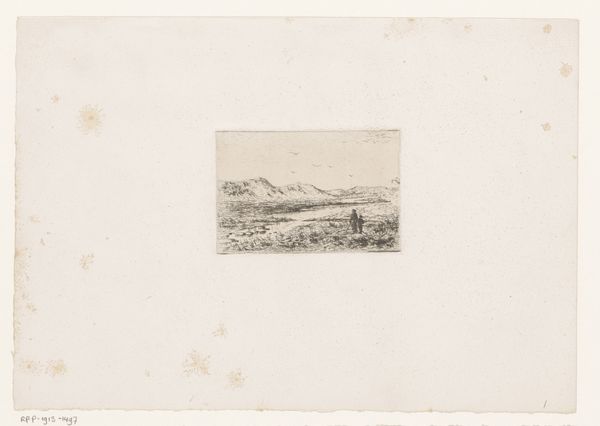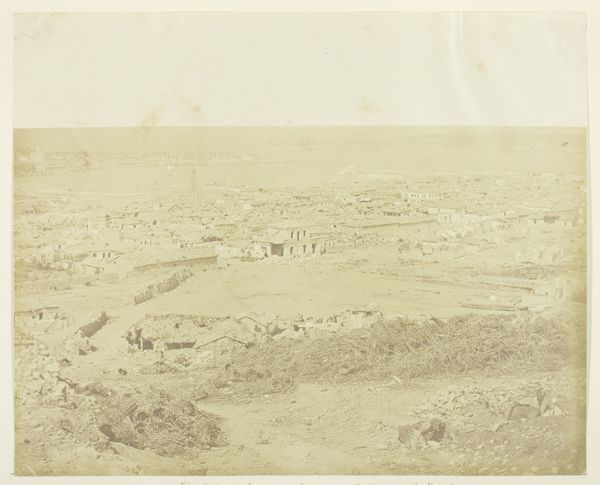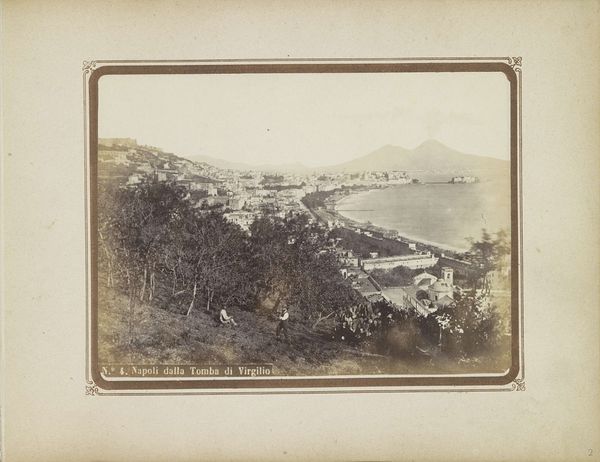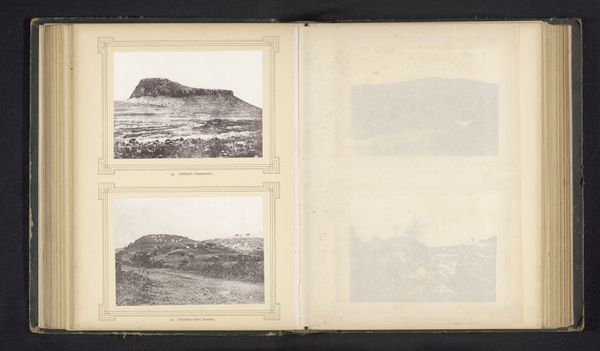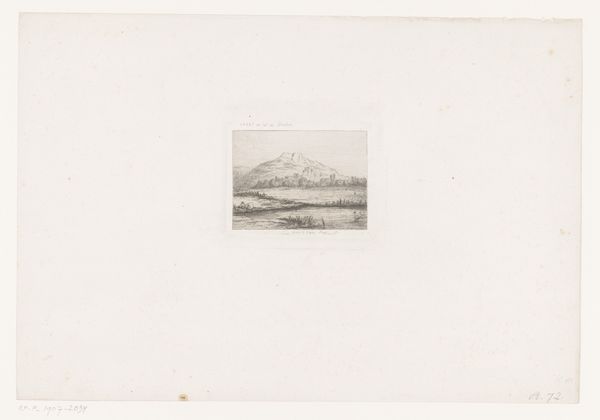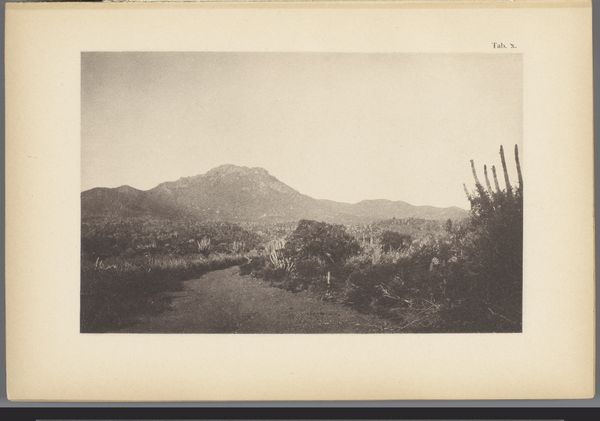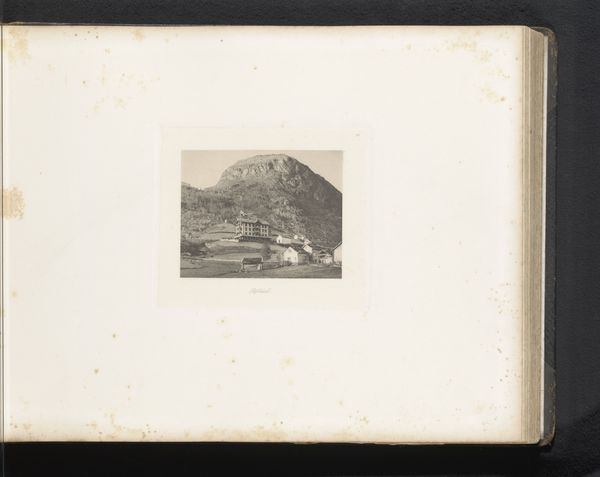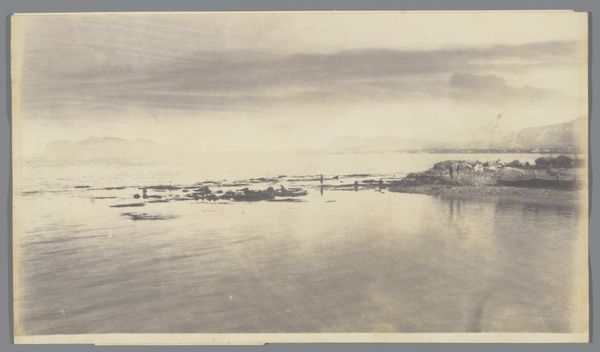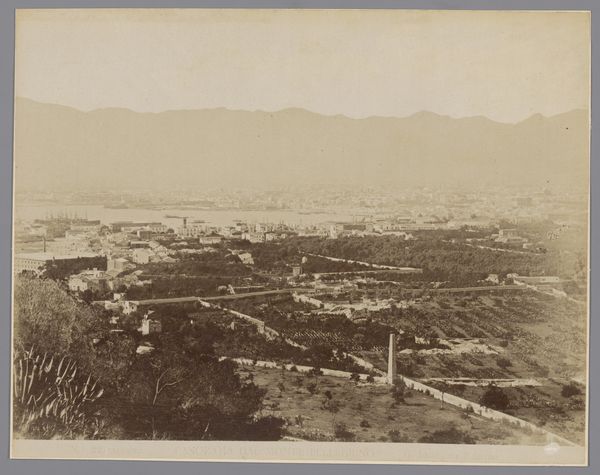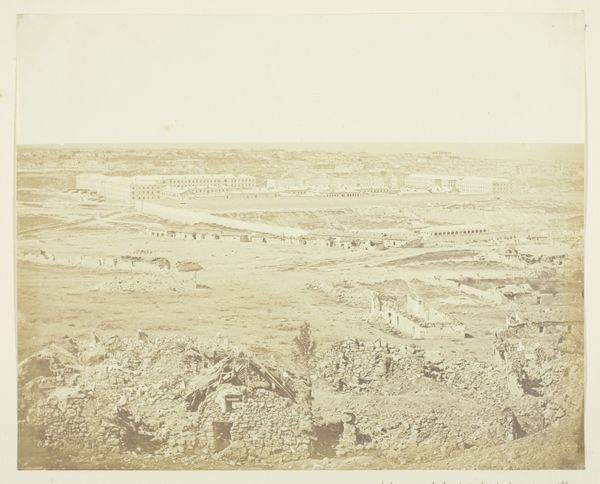
Copyright: Public Domain
Editor: So, here we have "Bay of Naples," a pencil drawing from 1822, by Friedrich Wilhelm Ludwig. It looks very tranquil. The composition, with the long curve of the bay and the volcano in the distance, feels very classically composed, yet somewhat unfinished. What do you see in this piece? Curator: Initially, one notes the tonal relationships. The artist utilizes a limited range, creating a sense of atmospheric perspective. How does the graduation of tone impact the formal structure? Editor: I think it flattens it somewhat? Like the mountains recede, but everything is almost the same pale grey. Is that deliberate, to focus our eye on the lines themselves? Curator: Precisely. Note the intricate linework used to depict the architecture on the left compared to the relatively plain sky. The contrast draws attention to the built environment, giving structure to what might otherwise be empty space. How would you interpret the spatial arrangement? Editor: Well, it creates a depth, going back towards the mountain. But I agree the focus feels more on the forms themselves. The buildings almost look like a natural formation, blending into the slope of the landscape. Curator: An interesting observation. Consider how the formal elements—line, tone, composition—create a harmonious, almost idealized representation, reducing it to it's purest aesthetic. Editor: It's amazing how much you can read from what at first glance seems to be just a simple sketch. Curator: Indeed, a rigorous examination of form reveals complex choices of structure, depth, and symbolism. It helps to see beyond representation, finding intrinsic meaning.
Comments
No comments
Be the first to comment and join the conversation on the ultimate creative platform.
